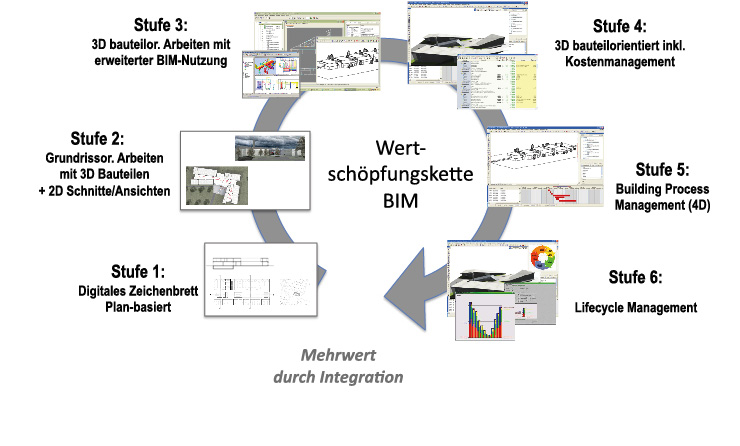Building Information Modeling - Potentials, Barriers and an Action Plan
The built environment is the largest economic capital of the industrialized nations. Although the construction industry operates efficiently and effectively in some areas, those involved in the construction processes still cannot adequately link their services either in a multidisciplinary (horizontal integration) or in a lifecycle-encompassing manner (vertical integration). Because of this problem, high deficits have arisen in planning, economic and environmental implementation, and in the value-creation chain in construction. The aim of the proposed project is to promote this integration through a comprehensive lifecycle planning method based on digital product data modeling, and to enable an improvement in the competitive position of the German construction industry in a global context. This planning environment is based on the principle of integral planning, and with respect to software on the implementation of the concepts of Building Information Modeling (BIM).

The project analyses, identifies and specifies the BIM problem context. To this end, the current procedures for the planning, execution and use of buildings are examined with respect to their processing and handling. Existing problem areas are identified and placed in context with the method of building information modeling. At the same time, a comparison is made of the situation in Germany with international projects and their execution with BIM. The problem areas, issues and possible barriers are identified based on the actual states and potentials analysed here. A study is also carried out into the capabilities of already-available and under-development BIM software with respect to systematic, user-oriented integrated planning methodology across the entire lifecycle. The study results represent a target-group-specific analysis of the added value of BIM in construction. The identified potentials and barriers of the BIM method serve as the basis for the creation of a differentiated action plan for construction in Germany. Based on the target-group analysis, specific concepts and strategies are elaborated for the three software fields of action - laws, rules, and contracts.
Summary english
